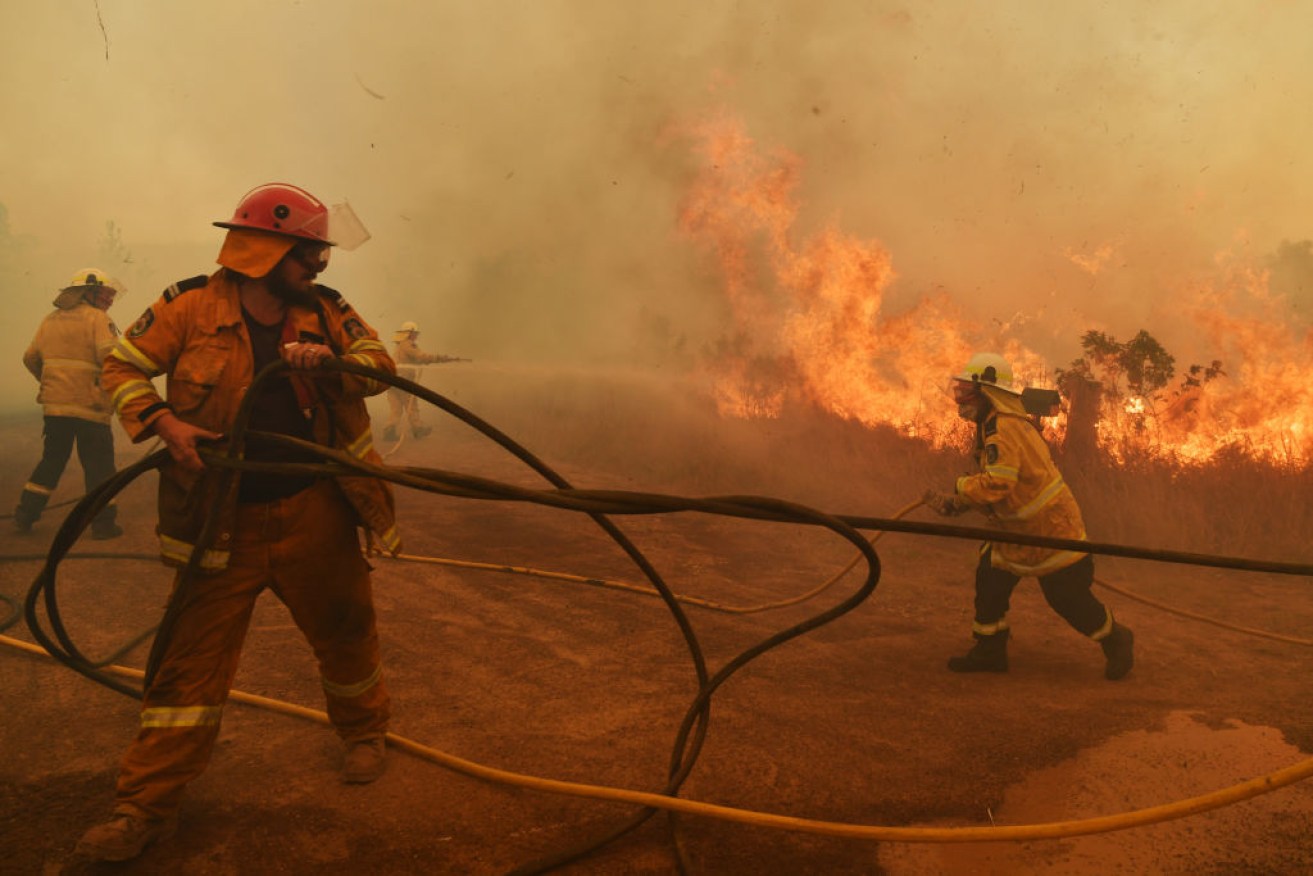On red-hot days, police try to track arsonists – but firebugs still strike


Resident in Western Australia are bracing for more bushfires. Photo: Getty
Around the country, police are ramping up their surveillance of known arsonists as the threat of bushfire escalates.
But many firebugs go undetected.
More than 85 per cent of the blazes burning across the nation are being caused by humans – and within that figure, over half are deliberately lit or suspicious, data from the Productivity Commission shows.
Arson is a disturbingly common crime: In NSW alone, 54 people have been charged with bushfire-related offences since August.
On particularly high-risk days, such as Thursday, police across the country ramp up their monitoring of known arsonists.
Dr Paul Read, co-director of the National Centre for Research in Bushfire and Arson, said police monitoring included GPS surveillance and house visits for high-risk individuals.
“They’re all monitored,” Dr Read said.
“On a hot day, they might get a knock on the door. In Victoria in 2012 the Baillieu government put GPS monitoring devices on arsonists, the same ones that are being used on pedophiles.”

Fire season has well and truly arrived and hundreds of homes have been lost. Photo: AAP
But since the GPS laws were introduced in Victoria, only one convicted arsonist has been tagged, with four other serious sex offenders with a history of arson also strapped with the device.
The current surveillance programs are shrouded in a veil of secrecy, one Victoria police spokesperson told The New Daily: “Police use current intelligence and information provided by the community to police or Crime Stoppers to identify and monitor suspicious behaviour and people.
“For operational reasons, we are not able to disclose the methods by which persons of interest are monitored.”
The spokesperson refused to answer questions about how many people were monitored, but said: “There appears to be a high level of complacency within the community about causing fires through reckless behaviours, particularly on high-risk fire days.”
In NSW, police have set up a special task force to work with local stations to build profiles on known arsonists, acting assistant commissioner Stuart Smith said.
“Profiles on people deemed to pose a risk in relation to potential bushfire arson are prepared each season and provided to individual police area commands and police districts,” he said.
“This process continues using additional intelligence collected throughout the danger period.”

More than 85 per cent of fires are being caused by humans, many deliberately. Photo: AAP
Mr Smith said the community had an important part to play in investigations as many of the tips come from Crime Stoppers.
“Information provided to police from members of the public can help identify and apprehend an arsonist and could help the police to prevent bushfire arson occurring.”
Each state and territory uses different processes.
Instead of monitoring known suspects, ACT police watch local hot spots, a spokesperson said.
“Police patrol specific areas in the ACT during total fire bans to deter and detect any suspicious activity or anti-social behaviour. We treat the deliberate lighting of fires very seriously.
“ACT Policing works closely with the ACT Rural Fire Service and ACT Fire & Rescue investigators to determine ‘hot spots’ based on recent fire and arson-related incidents.”
The ‘true arsonists’
There is a disturbingly low conviction rate for offenders, Dr Read said.
“Only 1 per cent are caught. After they’ve been caught only 10 per cent will light a fire again.”
While it’s hard to comprehend why someone would deliberately light a fire, most offenders are children who could easily be taught proper fire practices, Dr Read said.
Then there is a smaller group of “true arsonist” who would keep lighting fires into their 60s.
“There’s another group, above the age of 25, up to 60, that tend to light fires on hot days and closer to communities,” he said.
“They are marginalised, bitter, angry and they do tend to have more of a fascination with fire.
“All our profile work has been done on those convicted, but if only 1 per cent of them are being caught, the cunning ones aren’t being caught.”
A hard and fast approach to arson just isn’t going to work, he said. Instead the government should concentrate on early intervention with children.
“The priorities of government when it comes to fires become very reactive and very knee jerk. They don’t spend enough time talking about prevention. They let the suburbs burn.
“The only other thing we can do is make sure police and fire fighting investigators have enough resources to keep an eye on those true arsonists. While the kids are being educated.”








